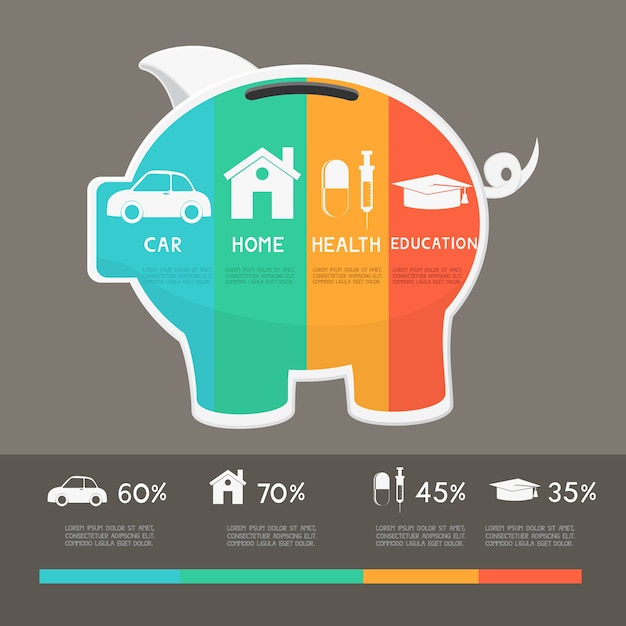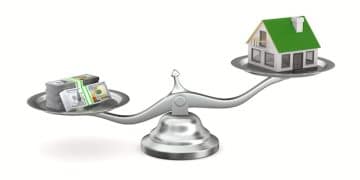How to Create a Personal Finance Plan: Achieve Your Goals by 2030

Creating a personal finance plan to achieve your financial goals by 2030 involves setting clear objectives, budgeting, saving, investing wisely, managing debt, and regularly reviewing and adjusting your plan to stay on track.
Want to achieve your financial goals by 2030? The key is creating a solid personal finance plan. How to create a personal finance plan to achieve your financial goals by 2030 involves a step-by-step approach that encompasses budgeting, saving, investing, and managing debt effectively, tailored to your unique circumstances.
Crafting Your Personal Finance Plan for 2030
Planning your finances might seem daunting, but it’s essential for securing your future. A well-structured personal finance plan provides a roadmap for achieving your financial aspirations, whether it’s buying a home, retiring early, or simply gaining peace of mind.
Let’s explore the key steps to create a personal finance plan that aligns with your goals and helps you navigate the financial landscape toward a successful 2030.

Setting Clear Financial Goals
Before diving into the specifics, identify what you want to achieve. Clear and well-defined goals are the foundation of any effective financial plan.
Think about your short-term, medium-term, and long-term objectives. These goals should be specific, measurable, achievable, relevant, and time-bound (SMART).
Budgeting Basics
Creating a budget is crucial for understanding where your money is going. It allows you to track your income and expenses, helping you identify areas where you can save more effectively.
- Track Your Expenses: Use budgeting apps, spreadsheets, or traditional methods to monitor your spending habits.
- Categorize Your Expenses: Separate your expenses into fixed (rent, mortgage) and variable (groceries, entertainment) categories.
- Identify Areas to Cut Back: Look for unnecessary expenses and find ways to reduce spending.
By understanding your cash flow, you can make informed decisions about saving and investing. Budgeting provides a clear picture of your financial health, enabling you to make the necessary adjustments.
Saving Strategies for Your Financial Goals
Saving is a fundamental component of any successful financial plan. Establishing effective saving strategies will help you accumulate the funds needed to achieve your specific goals.
Explore various saving options and techniques to maximize your savings potential and stay on track towards a financially secure future.
Emergency Fund Essentials
An emergency fund serves as a financial safety net for unexpected expenses. Aim to save three to six months’ worth of living expenses in an easily accessible account.
Having an emergency fund can prevent you from incurring debt or disrupting your long-term financial plans when unforeseen circumstances arise.

Setting Up Multiple Savings Accounts
Consider opening multiple savings accounts to allocate funds for different goals, such as a down payment on a house, a vacation, or retirement.
This approach helps you stay organized and motivated, making it easier to track your progress toward each individual objective.
Automating Your Savings
Set up automatic transfers from your checking account to your savings accounts regularly. This ensures consistent saving and prevents the temptation to spend the money.
- Choose a Transfer Frequency: Decide whether to transfer weekly, bi-weekly, or monthly based on your income schedule.
- Set Realistic Amounts: Start with smaller, manageable amounts and gradually increase as you become more comfortable.
- Review and Adjust Regularly: Monitor your savings progress and adjust the amounts and frequency as needed.
By automating your savings, you can ensure that you are consistently building your financial reserves without the need for constant manual effort.
Investing Wisely to Grow Your Wealth
Investing is crucial for long-term financial growth. It allows your money to work for you, generating returns that can significantly increase your wealth over time.
Understand the different investment options available and create a diversified portfolio to mitigate risk and maximize potential gains.
Understanding Investment Options
Familiarize yourself with various investment vehicles, including stocks, bonds, mutual funds, exchange-traded funds (ETFs), and real estate. Each has its own risk and return profile.
Diversifying your investments across different asset classes can help reduce risk and improve your overall portfolio performance.
Creating a Diversified Portfolio
Diversification is key to managing risk. Spread your investments across different sectors, industries, and geographic regions.
This approach helps protect your portfolio from significant losses if one particular investment performs poorly.
Retirement Planning
Start planning for retirement early. Take advantage of employer-sponsored retirement plans like 401(k)s and consider opening an individual retirement account (IRA).
- Contribute Regularly: Consistently contribute to your retirement accounts, even if it’s a small amount.
- Take Advantage of Employer Matching: If your employer offers matching contributions, maximize your contributions to take full advantage of this benefit.
- Review and Adjust: Periodically review your retirement plan and adjust your contributions and asset allocation as needed.
Retirement planning is a long-term endeavor that requires consistent effort and periodic adjustments to ensure you stay on track to achieve your goals.
Managing Debt Effectively
Managing debt is a critical aspect of personal finance. High levels of debt can impede your ability to save and invest, hindering your progress towards your financial goals.
Develop a strategic approach to managing and reducing debt, focusing on high-interest debts first.
Prioritizing High-Interest Debt
Focus on paying off high-interest debts like credit card balances and payday loans first. The sooner you eliminate these debts, the less you’ll pay in interest over time.
Consider using debt avalanche or debt snowball methods to accelerate your debt repayment.
Debt Consolidation Options
Explore options for consolidating your debts, such as balance transfer credit cards or personal loans. This can simplify your payments and potentially lower your interest rates.
Be sure to evaluate the terms and conditions of any debt consolidation offer carefully before proceeding.
Avoiding New Debt
Make a conscious effort to avoid accumulating new debt. Limit your credit card spending and resist the urge to take on more loans unless absolutely necessary.
Develop a budget that aligns with your income and prioritize saving over spending to avoid relying on credit.
Regularly Reviewing and Adjusting Your Plan
Your personal finance plan should not be static. Regularly review and adjust it to reflect changes in your life, such as career advancements, family additions, or economic shifts.
Consistent monitoring and adjustments will ensure that your plan remains relevant and effective in helping you achieve your financial goals.
Annual Financial Check-Up
Schedule an annual financial check-up to assess your progress, review your goals, and make any necessary adjustments to your plan. This provides an opportunity to reassess your savings, investments, and debt management strategies.
- Review Your Budget: Analyze your income and expenses to identify areas for improvement.
- Assess Your Investments: Evaluate the performance of your investment portfolio and rebalance as needed.
- Adjust Your Goals: Update your financial goals to reflect changing circumstances.
A regular financial check-up helps you stay proactive and responsive to changes in your financial landscape.
Adjusting to Life Changes
Be prepared to adjust your financial plan in response to significant life events, such as marriage, parenthood, or job loss. These events often necessitate changes in your budget, savings, and investment strategies.
Seeking professional financial advice can be particularly helpful during these periods of transition.
Staying Informed
Stay informed about economic trends, interest rate changes, and new investment opportunities. This knowledge will help you make informed decisions and adjust your plan accordingly.
Subscribe to financial newsletters, read reputable financial publications, and consult with financial professionals to stay updated on the latest developments.
| Key Point | Brief Description |
|---|---|
| 🎯 Set Financial Goals | Establish clear, measurable, achievable, relevant, and time-bound objectives. |
| 💰 Create a Budget | Track income and expenses to identify saving opportunities. |
| 🌱 Invest Wisely | Diversify investments across different asset classes. |
| 🔄 Review Regularly | Adjust or update your plan to reflect changing situations. |
Frequently Asked Questions
It’s recommended to review your personal finance plan at least once a year or whenever there are significant life changes, such as a new job, marriage, or the birth of a child.
Re-evaluate your budget to ensure it’s realistic and flexible. Identify areas where you can cut back on spending and consider using budgeting apps or tools to help you stay on track.
Aim to save three to six months’ worth of living expenses in your emergency fund. This will provide a financial cushion for unexpected costs like job loss or medical bills.
Consider low-risk investment options like high-yield savings accounts, certificates of deposit (CDs), and money market funds. These typically offer lower returns but provide capital preservation.
Prioritize paying off high-interest debts first. Explore options like debt consolidation or balance transfers to lower interest rates. Also, make a plan to avoid accumulating new debt.
Conclusion
Creating a personal finance plan to achieve your financial goals by 2030 is a proactive and rewarding journey. By setting clear goals, budgeting, saving, investing wisely, managing debt, and regularly reviewing and adjusting your plan, you can pave the way for a secure and prosperous financial future.





